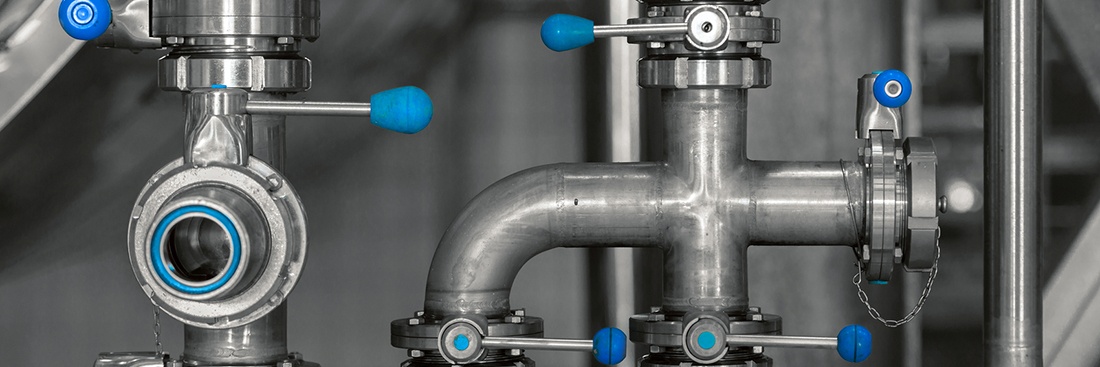
Galvanized pipe is less susceptible to oxidization than some other metals but still corrodes over time. Galvanized water pipes can be repaired with blow through epoxy to extend their lifespan
Galvanized Water Pipe
Galvanized water pipes are made of iron or steel that has a thin protective coating of zinc. They are durable and have a life expectancy of 50-70 years. However, their popularity began to decline in the 1960s when more lightweight and inexpensive plastic pipes entered the market.
Why Are Water Pipes Galvanized
Water pipes are galvanized to prevent rusting. The benefit of zinc is that it is slow to oxidize. Even the thin layer that coats galvanized water pipes is enough to protect the iron or steel from rust for decades. Without the zinc, iron and steel can start to rust within a year or two.
Does Galvanized Pipe Rust?
Galvanized pipe does rust over time. Rust is the result of oxidation, the chemical reaction between oxygen and certain metals.
Rust can appear on the outside of pipes, especially those underground. Oxygen and other minerals in the soil attached themselves to the pipe. Over time, the oxygen will cause the zinc coating to rust. Eventually, the oxygen will rust the iron or steel as well.
Galvanized pipe rusting inside is caused by high levels of oxygen in the water. The interior of pipes that carry hot water will rust faster than those carrying cold water. Hot water has more “suspended” oxygen molecules that can break free and attach themselves to the metal.
Minerals in water can also build up inside galvanized plumbing pipe and cause damage through corrosion.
How to Clean Galvanized Pipe
Cleaning galvanized pipe can be a do-it-yourself project in some cases. If there is a small amount of rust on the outside of the pipe, you can likely remove it yourself with plain steel wool and vinegar.
But if the rust is extensive, underground, or inside the pipe, you need the service of a plumbing professional. At CuraFlo, we know how to clean galvanized steel and iron pipes in the most effective and efficient way.
Not every plumbing company has the expertise needed to remove rust from galvanized steel pipes. If you are researching plumbing services, be sure to ask: “How do you clean galvanized steel?” If the response is “with a grinder”, you might want to consider other providers. It is difficult to grind off rust without also etching into the pipe itself.
Extensive scratching inside a pipe makes it more difficult to clean when the rust inevitably returns years later. Scratches from mechanical grinding can create weak spots in the metal pipe.
How to Remove Galvanized Coating on a Pipe
The first step of repairs that involve cutting away and welding galvanized pipes is removing the galvanization. If this isn’t done, the zinc coating will release fumes as cutting and welding torches heat it up. Those fumes are dangerous to inhale.
Since the galvanization is on both the inside and outside of the pipe, the vinegar (or similar mild acid) method won’t work. Grinding is an option but as noted in the previous section, there is a risk of damaging the pipe.
Sandblasting galvanized steel to remove the galvanized coating produces the best results. Standards call for the removal of zinc coating 1”-4” from either side of intended weld spots. Compared to mechanical grinding, sandblasting makes it easier to control the amount and location of removed galvanization.
The goal is to remove enough galvanization to make repairs safe to complete yet limit how much pipe needs to be regalvanized. To regalvanize repaired water pipe, professional plumbers apply zinc coating with a brush. This kind of galvanization is effective for small areas.
Galvanized Pipe Corrosion
Galvanized water pipe corrosion is most often caused by years of calcium and magnesium build-up. If caught early enough, corrosion can be cleared away with plumbing-grade hydro-jet or sandblasting equipment. Cleaning the inside of pipes every few years is a good preventive practice. It can extend the life of galvanized and other water pipes by up to a decade per cleaning.
Left unmanaged, mineral build-up will continue and the corrosion will weaken then break through the metal pipes and repair will be necessary.
Galvanized Pipe Repair
Immediate repair of a leak in galvanized steel plumbing can be done with a pipe repair clamp. Using the specialized clamp (that can be bought at hardware and home renovation stores) to cover and seal the leak is “first aid”. It buys you time to find a service provider with expertise in repairing galvanized pipe for water.
The team at CuraFlo has years of experience and expertise assessing galvanized steel pipe corrosion and can help you understand the options. Most often, we find pipe lining to be more cost-effective and less disruptive than replacement. But if replacement is the right choice, our professional plumbers know how to remove galvanized pipe in the most efficient way.
